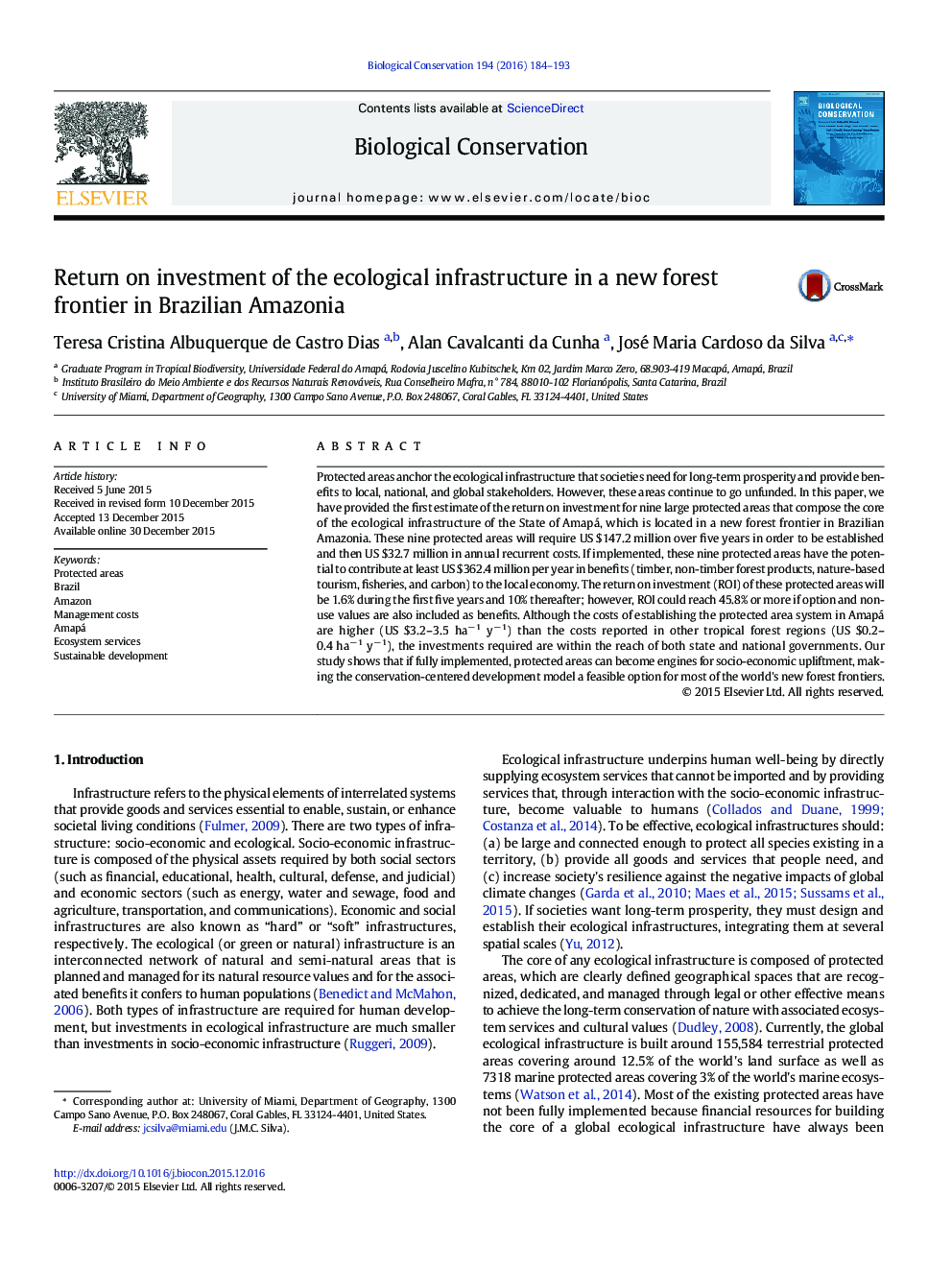| کد مقاله | کد نشریه | سال انتشار | مقاله انگلیسی | نسخه تمام متن |
|---|---|---|---|---|
| 6298807 | 1617907 | 2016 | 10 صفحه PDF | دانلود رایگان |
- The establishment of 9.2 million hectares of protected areas in Amapá, Brazil, requires US$147.2 million over five years.
- The annual recurrent costs for this set of protected areas is estimated in US$ 32.7 million.
- Protected areas have the potential to contribute at least US $362.4 million per year in direct benefits to Amapá's economy.
- The return on investment (ROI) of fully protected areas protected areas range from 10% to 162%.
- Functional protected areas can become engines for socio-economic upliftment for most of the world's new forest frontiers.
Protected areas anchor the ecological infrastructure that societies need for long-term prosperity and provide benefits to local, national, and global stakeholders. However, these areas continue to go unfunded. In this paper, we have provided the first estimate of the return on investment for nine large protected areas that compose the core of the ecological infrastructure of the State of Amapá, which is located in a new forest frontier in Brazilian Amazonia. These nine protected areas will require US $147.2 million over five years in order to be established and then US $32.7 million in annual recurrent costs. If implemented, these nine protected areas have the potential to contribute at least US $362.4 million per year in benefits (timber, non-timber forest products, nature-based tourism, fisheries, and carbon) to the local economy. The return on investment (ROI) of these protected areas will be 1.6% during the first five years and 10% thereafter; however, ROI could reach 45.8% or more if option and non-use values are also included as benefits. Although the costs of establishing the protected area system in Amapá are higher (US $3.2-3.5 haâ 1 yâ 1) than the costs reported in other tropical forest regions (US $0.2-0.4 haâ 1 yâ 1), the investments required are within the reach of both state and national governments. Our study shows that if fully implemented, protected areas can become engines for socio-economic upliftment, making the conservation-centered development model a feasible option for most of the world's new forest frontiers.
Journal: Biological Conservation - Volume 194, February 2016, Pages 184-193
